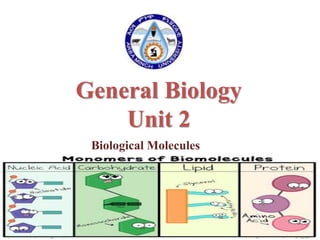This document provides an overview of biological molecules and the cellular basis of life. It discusses the main types of biological molecules including carbohydrates, lipids, proteins, and nucleic acids. It also describes the basic components and functions of cells, and outlines the cell theory which states that cells are the fundamental unit of life and all cells come from pre-existing cells.

























































































